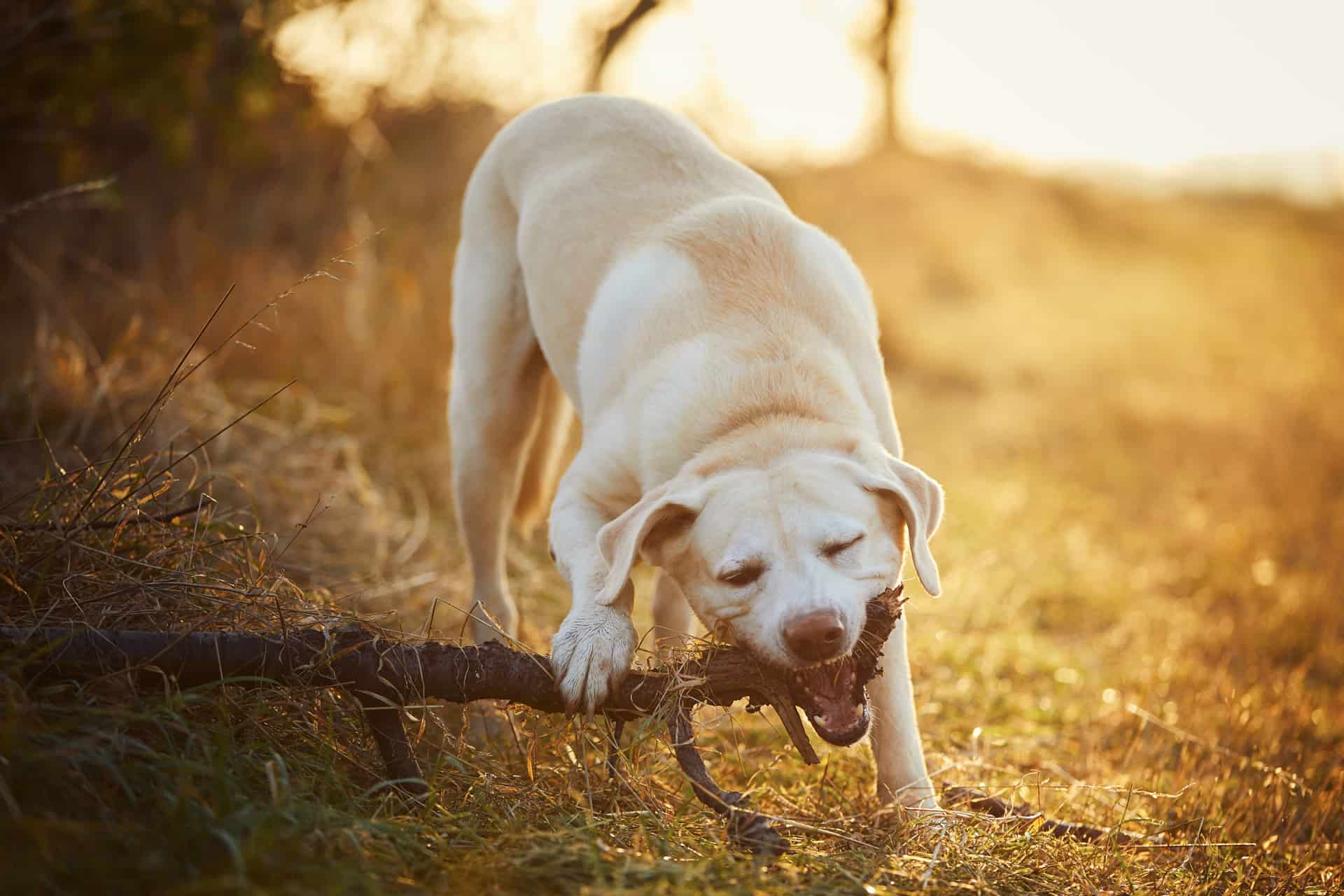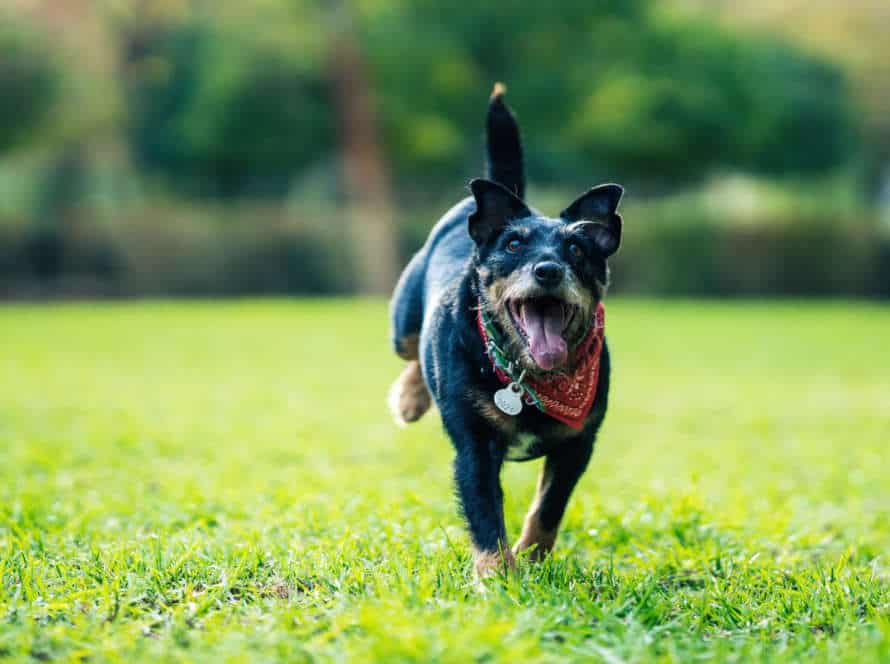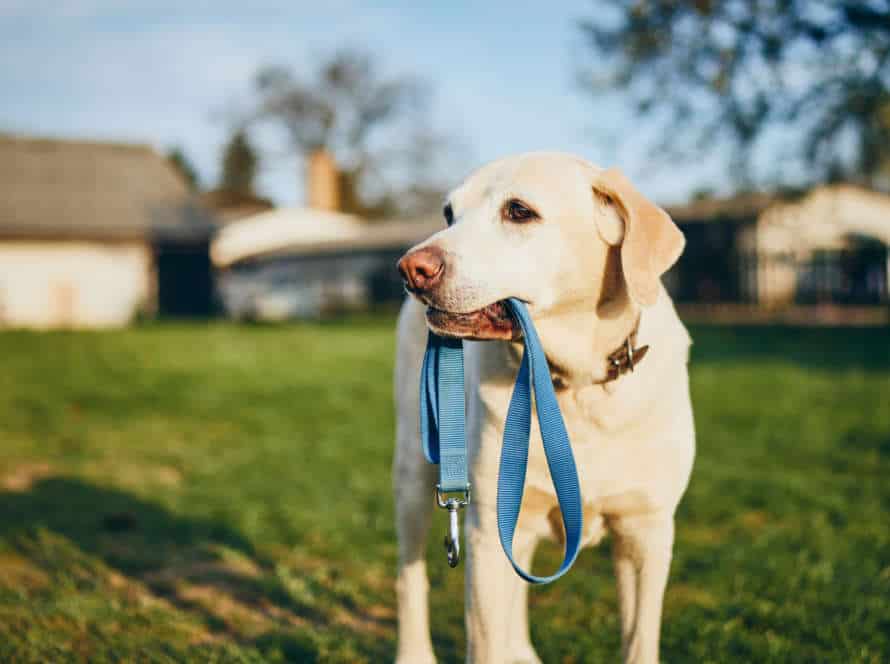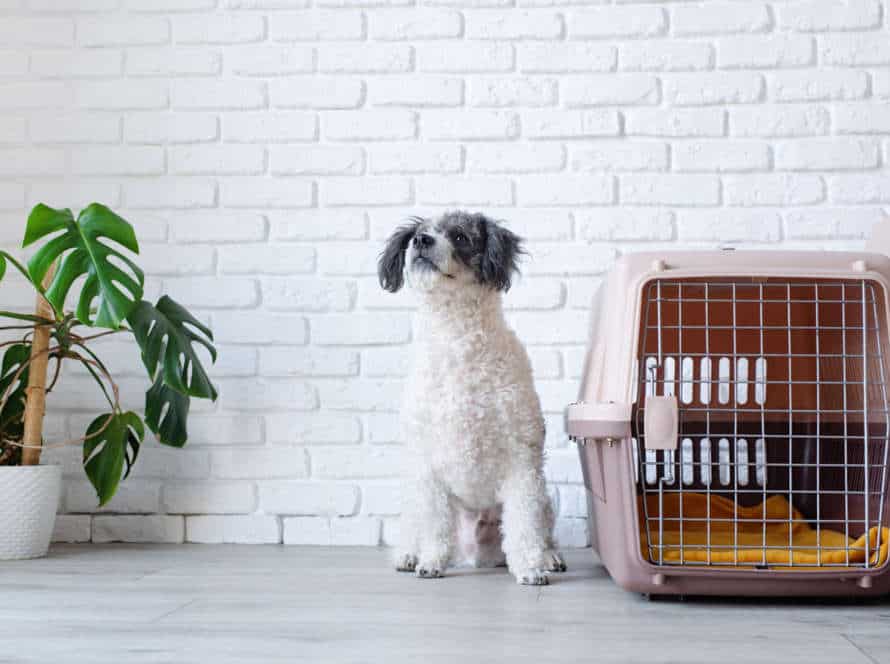How to Teach Your Adult Dog Bite Inhibition Skills
Teaching your adult dog bite inhibition skills is essential. Here’s how you can help:
- Identify situations likely to cause aggressive behavior.
- Reward good behavior with treats and praise.
- Simulate situations such as chew toys and tug of war to show safe use of the mouth.
- Raise interaction level and session duration gradually, while watching your dog’s body language and behavior.
- If aggression is shown, stop the session and remove any stimulus.
- Also, seek professional help if your dog is excessively aggressive or bites.
Pro Tip: Patience and consistency are key. Start with short sessions and increase duration slowly, to avoid overwhelming your pet.
Understanding the Importance of Bite Inhibition Training
It’s a must for every doggo and their owners to have good bite inhibition skills, no matter the age. To keep your pup safe and content, it’s important to have a pup trained on how to respect boundaries and control their biting behaviour. Let’s now look deeper into why this type of training is important.
What is Bite Inhibition and Why is it Important
Bite inhibition is the capacity of an adult dog to control the intensity of its bite during playtime and contact with people or other animals. It is essential as it helps to stop unintended aggression or injury, and is a must-learn skill for all dogs.
Puppy bite inhibition training begins when they are young. However, it can also be taught to older dogs who have not had the proper training. To teach your adult dog this skill:
- Identify their level of bite inhibition. Do this by offering your hand, wrist, or arm for them to mouth as if playing.
- Use verbal cues like “gentle,” “no biting,” or “easy” to encourage your dog to manage their pressure while mouthing.
- Reward desired behaviour and gently discipline bad behaviour by immediately halting play and walking away.
- Train your dog regularly to make it a habit. They will soon learn how to interact with humans without unintentionally causing any harm.
The Risks of Not Teaching Bite Inhibition
Bite inhibition training is a must for all dogs. Not teaching your adult dog this skill can be risky. Here are the dangers:
- Biting incidents: A dog who hasn’t learnt bite inhibition might bite people or other animals, which can be dangerous.
- Aggression: If a dog doesn’t learn bite inhibition, it can become aggressive, like barking, growling, or snapping.
- Legal issues: If a dog bites someone and hasn’t been trained, their owner could have legal and financial consequences.
To avoid these risks, it’s important to start bite inhibition training early and reinforce the skills regularly. For best results, get help from a professional dog trainer.
Benefits of Bite Inhibition Training
Bite inhibition training is important for adult dog owners. It reduces the risk of dog bites and encourages responsible pet ownership. Here are the advantages:
- Preventing Bites: It teaches your dog to hold back when biting humans or other dogs, during play or training.
- Socialization: Bite inhibition makes your pet more confident around strangers and animals.
- Bonding: You and your dog will be closer, if you are consistent and reinforcing.
- Lower Risk of Euthanasia: Teaching bite inhibition reduces the chance of aggressive behavior and being put down.
- Encouraging Responsibility: Training is a pet owner’s duty. It shows commitment and helps to prevent biting.
The Basics of Bite Inhibition Training
Bite Inhibition Training: It’s important! For puppies, socialization. For adult dogs, obedience. Teach them to control the strength of their bite. Especially when with people. Teach your adult dog how to properly respond to cues. Help them to understand what behaviors are okay and which are off-limits. Let’s take a closer look: Basics of Bite Inhibition Training and how to start.
Understanding Your Dog’s Behavior and Personality
Being a responsible pet owner requires understanding your pup’s behavior and personality. This builds a strong relationship and keeps everyone safe, including your pup.
Bite inhibition is an important skill for adult dogs to learn. Pet owners can do this in four manageable steps:
- Offer rewards or praise for desired actions.
- Let your pup get used to different situations.
- Be aware of signs of aggression or nervousness.
- Consider professional help if needed.
By following these strategies, you can create a peaceful living environment and lessen the risks of having an unruly pet.
Pro Tip: Positive reinforcement is better than punishment when training your dog.
Choosing the Right Training Techniques for Your Dog
As a pup parent, you should select the correct training methods that fit your canine’s breed and temperament to help them learn and obey.
Bite Inhibition Training is a must for adult pooches; it teaches them self-control and stops them from biting, and is especially important for breeds with a strong bite or hunting background.
To do Bite Inhibition Training, you must:
- Play with your doggo; when they get excited, stop and stay still.
- If they still nip or bite, say a firm “No!“
- If they obey, continue playing.
- If they don’t, make a loud sound or yell to startle them.
- Be consistent and reward good behavior; when they improve, progress to more advanced training.
Setting up Training Sessions
Training your adult dog on bite inhibition skills is essential. To do this, ensure a positive environment with minimal distractions and plenty of room to move.
Offer chew toys or treats and correct them if they bite too hard. Progress from soft to harder toys as they learn. Introduce socialization, understand their body language and behavior, and provide socialization opportunities.
Always reward good behavior and avoid using punishment. Bite inhibition training takes patience and dedication – but it’s worth it, as it keeps your pup and others safe.
Step-by-Step Training Process
Teaching your adult pup bite inhibition is part of responsible dog ownership. Inhibition is the skill of controlling the pressure of a bite, so no one gets hurt. To teach this, there’s a step-by-step process. This article will explain how to help your adult pup learn bite inhibition. Follow the detailed training process for success!
Starting with the Basics: Teaching Your Dog to Control the Force of Their Bite
Teaching your adult dog bite inhibition is a must! Here’s how:
- Work out your pup’s biting force limit and act accordingly.
- Use chew toys, or similar, to stop any aggressive or too rough behavior.
- Praise, treats and toys can be used to encourage good biting.
- With close supervision, keep increasing the difficulty of the training to reinforce the right habits.
Remember, positive reinforcement and consistency are key to teaching your adult dog bite inhibition that sticks!
Moving on to More Advanced Skills: Teaching Your Dog to Release Their Bite
Teaching bite inhibition skills to your adult dog is a must for responsible dog ownership. Especially if your dog has a history of aggressive behavior. Here is a step-by-step training process:
- Start with basic commands like “sit,” “come,” and “stay.” This builds the foundation for further training.
- Use a toy or chew bone to train your pup. Place the object in the pup’s mouth and then say “drop it.” Praise and reward your pup when they release the object.
- If pup responds to “drop it,” use open-palm pressure on their mouth to encourage the release. Get professional help if needed.
- Seek professional help if pup has a history of aggressive or dangerous behavior.
Teaching your pup to release their bite takes patience, persistence, and consistency. With the right training, you can help them develop bite inhibition skills which will keep everyone safe.
Adding Distractions and Real-World Situations: Reinforcing Bite Inhibition Skills
Bite inhibition is an important skill for all dogs to learn. To strengthen this skill in adult dogs, distractions and real-world situations should be used during training. Have a look at this guide:
- Start with basic training in a calm place.
- Introduce mild distractions such as toys or treats.
- Make the distractions harder by adding noise and movement.
- Continue training in a controlled environment but use real-world situations.
- Go outdoors, first in calm places, then louder and busier ones.
By following these steps, you can help your adult dog learn to interact with people and other animals without hurting them. Additionally, use positive reinforcement techniques such as treats or praise for good behaviour and take rests when needed.
Common Challenges and Solutions
Teaching an adult dog bite inhibition can be hard. Especially if your pup never learnt it or is anxious in a new place. It is important to be ready for the obstacles you may encounter. We will now look at some of the most common.
Overexcitement and Difficulty Focusing
Dogs can be overly-excited and have difficulty focusing when learning bite inhibition skills. Here are a few solutions to help:
- Start slow – Teach basic commands like “sit” or “stay” in a peaceful, familiar place with minimal distractions. Gradually increase the difficulty and distractions.
- Short sessions – Dogs can’t focus for a long time. Break up the training into quick, frequent intervals.
- Use rewards – Whenever the pup exhibits proper bite inhibition (e.g. licking instead of biting), reward them with treats or compliments. This will inspire them to keep doing the good behaviors.
- Exercise – Give them regular exercise and playtime. This will help them stay calm and focused.
- Ask a pro – If the problem persists, get help from a professional dog trainer.
Key to success: Be patient and repeat the lessons consistently, and eventually your adult dog will learn and improve.
Fear and Aggression
Fear and aggression are common in adult dog training. Bite inhibition skills can help prevent these behaviors.
Hand-feeding is a great technique. Offer one piece of food at a time, so they take it gently from your hand.
Verbal cues like “gentle” or “easy” are also useful.
If biting occurs, redirect the attention with a toy.
Reward good behavior with positive reinforcement.
Consistency, patience and no punishment are musts.
Bite inhibition training will help prevent fear and aggression in your adult dog.
Patience and Persistence: Staying Committed to Training
Teaching your adult pup bite inhibition? It’s important. Requires patience and persistence to get results. Here’s the challenges and solutions:
Challenges and Solutions:
Challenge: Playtime = biting and chewing on everything, incl. you!
Solution: Use a toy instead of your hands when playing. Praise and playtime rewards encourage calm behavior.
Challenge: Dog unresponsive to training.
Solution: Remain consistent with cues and rewards. Break down the process into small steps. Reward pup for small successes.
Challenge: Inconsistent behavior, lashing out at unexpected times.
Solution: Reinforce bite inhibition principles, even when pup is behaving. Be patient and consistent in training. Give pup enough exercise and mental stimulation.
Remember, teaching pup bite inhibition needs time and effort. Stay committed. Be consistent in training. Celebrate pup’s progress.
Developing a Long-Term Training Plan
Training your adult dog to not bite can be tough. The aim is to modify any aggressive actions they already have. It’s a must to make a long-term plan which uses positive rewards and strengthens the bond between you and your pup. This plan should be adapted for your pup’s personal needs.
Reinforcing Bite Inhibition Skills Throughout Your Dog’s Life
Bite inhibition is a must-have ability for all pups, no matter their age. To guarantee your canine continues to use their muzzle in a gentle and suitable way, regularly reinforcing these skills is key.
Here are some tricks to introduce and strengthen bite inhibition in grown-up canines:
- Positive reinforcement: Give a treat when they communicate with you or others without using their mouth.
- Consistency: Set clear limitations and commit to them to avoid perplexing your pup.
- Drill often: Regular practice will help reinforce the skills and keep them fresh in your dog’s head.
- Make it regular: Incorporate bite inhibition skills into everyday activities like playtime and grooming.
Keep in mind, instruction is a continuous process and it is never too late to begin reinforcing bite inhibition skills.
Incorporating Bite Inhibition Training Into Other Areas of Your Dog’s Life
Pet parents should always teach their dog bite inhibition training, especially if they have an adult dog. Incorporating this training into other areas of your pup’s life makes it more effective and a long-term habit. Here are some tips:
- If your pup bites too hard during playtime, make a yelp sound to show that it hurts.
- Offer appropriate toys to chew on and keep them ready.
- Use treats to reward good behavior and redirect negative behavior.
- Create a steady pattern for your dog, like exercise, sleep, and mealtime.
By incorporating bite inhibition training into other areas of your dog’s life, you can help them create a lifelong habit that’s beneficial for both of you.
Celebrating and Continuing Your Dog’s Progress.
Celebrating and maintaining your pup’s progress is crucial for creating a long-term training plan. Especially when it comes to teaching them bite inhibition.
Bite inhibition is the ability of a dog to control the force of their bite, avoiding serious harm. Here are some suggestions for celebrating & continuing your pup’s progress:
- Give treats or praise when they limit their bite during playtime or training.
- Use positive reinforcement like clicker training to encourage good behaviour & discourage the bad.
- Do regular training sessions and gradually increase the difficulty as they progress.
Remember, teaching bite inhibition takes time & patience. Celebrate every step and keep working with your pup to guarantee their safety and that of others.
Frequently Asked Questions
Q: What is bite inhibition in dogs?
A: Bite inhibition is a dog’s ability to control the force of their bite, so they do not cause harm or serious injury to humans or other animals.
Q: Why is it important to teach bite inhibition to adult dogs?
A: Bite inhibition is especially important for adult dogs because they have stronger jaws and can cause more damage than puppies. Teaching them bite inhibition skills can help prevent accidents and make them safer around people and other animals.
Q: How can I teach my adult dog bite inhibition?
A: One effective way to teach bite inhibition is to gently discourage your dog from biting or mouthing too hard during play or training sessions. You can also teach them to give you a soft bite or gentle mouth contact by offering treats or toys.
Q: Is it possible to teach an adult dog bite inhibition if they have never learned it before?
A: Yes, it is possible to teach an adult dog bite inhibition skills even if they have never learned it before. However, it may take more time and patience to train them compared to puppies.
Q: Can professional dog trainers help teach bite inhibition skills?
A: Yes, professional dog trainers can help teach bite inhibition skills through various training methods such as positive reinforcement or aversion training. It is best to consult with a professional to determine the most effective training approach for your dog.
Q: What should I do if my adult dog continues to bite too hard after training?
A: If your adult dog continues to have issues with biting too hard, it is essential to seek professional help from a certified dog trainer or behaviorist. They can identify the underlying cause of the biting and develop a customized training plan to address the issue.







